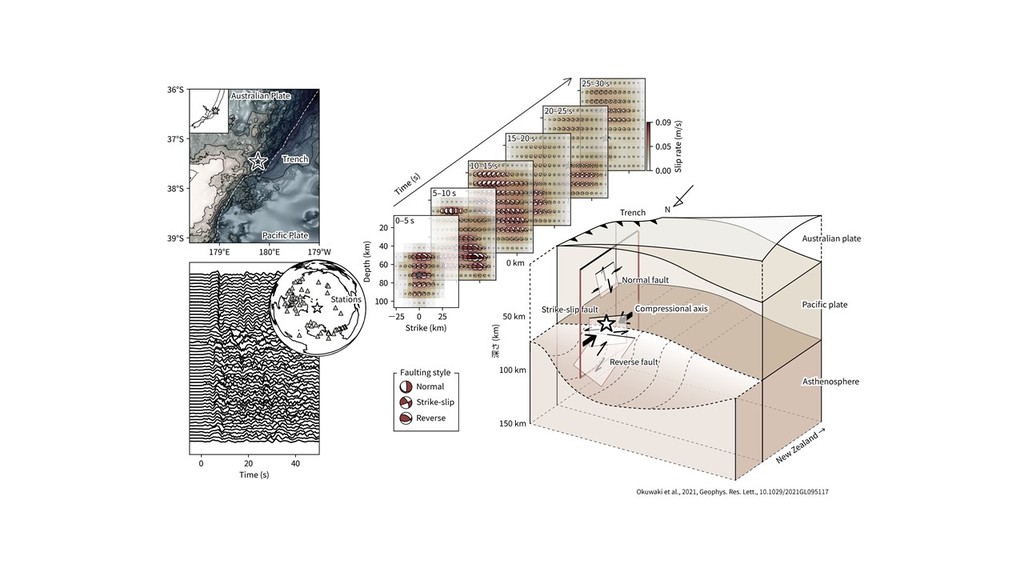・A moment magnitude 7.3 2021 East Cape, New Zealand intraslab earthquake comprised multiple rupture episodes with different faulting styles.
・The complex rupture comprises components of shallow trench-normal extension and unexpectedly, deep trench-parallel compression in slab.
・The trench-parallel compression likely reflects stress rotation at a buoyancy contrast that drives slab contortion.
Abstract
The state-of-stress within subducting oceanic plates controls rupture processes of deep intraslab earthquakes. However, little is known about how the large-scale plate geometry and the stress regime relate to the physical nature of the deep intraslab earthquakes. Here we find, by using globally and locally observed seismic records, that the moment magnitude 7.3 2021 East Cape, New Zealand earthquake was driven by a combination of shallow trench-normal extension and unexpectedly, deep trench-parallel compression. We find multiple rupture episodes comprising a mixture of reverse, strike-slip, and normal faulting. Reverse faultingdue to the trench-parallel compression is unexpected given the apparent subduction direction, so we require a differential buoyancy-driven stress rotation, which contorts the slab near the edge of the Hikurangi plateau. Our finding highlights that buoyant features in subducting plates may cause diverse rupture behavior of intraslab earthquakes due to the resulting heterogeneous stress state within slabs.
Benefit
・Using a novel finite-fault inversion technique.
・The method does not require a-priori knowledge of the fault geometry and can flexibly resolve complex faulting styles in large earthquakes. Therefore, it can illuminate the heterogeneous stress state near the earthquake.
Market Application
・Seismic source inversion and simulation
・Providing a robust and flexible seismic source model
Publications
https://agupubs.onlinelibrary.wiley.com/doi/epdf/10.1029/2021GL095117
Other
https://www.tsukuba.ac.jp/en/research-news/20211217140000.html

